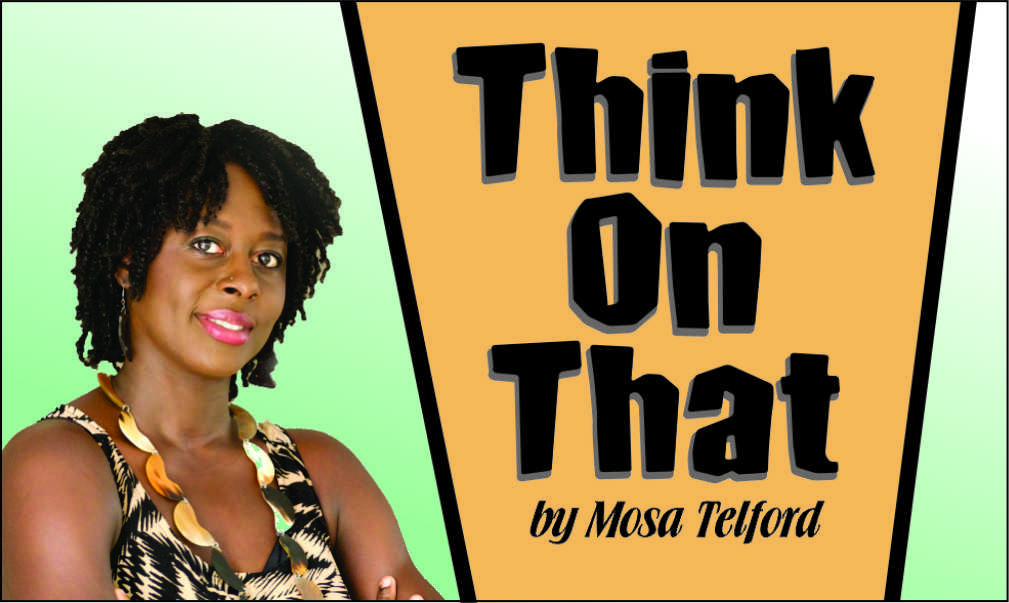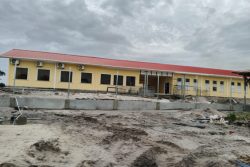This week I had the privilege of traveling across the Rupununi. It is an experience that every Guyanese should have at least once. The beautiful savannahs and grand mountain ranges are incomparable to any other space I have seen in this country. The Central Rupununi savannahs, North Rupununi savannahs and South Rupununi savannahs, are a paradise of biodiversity. The Kanuku Mountains seem to kiss the clouds and the land seems endless. What makes it even more beautiful is that much of it is undisturbed by the interventions and inventions of man, thus remaining how nature carved it to be, effortlessly display the beauty of Guyana’s largest region.
For a visitor to Region Nine from a busy city like Georgetown, the air breathes new life into you. Where there is noise in your spirit, it calms you. The peace and quiet compels you to stop, observe, and listen.
I traveled from Lethem to villages like Nappi, Moco Moco, Parikwaranau and Kumu in Central Rupununi; villages like Shulinab and Merawau in the South-Central Rupununi and Annai and Wowetta in North Rupununi; and Karasabai and Tiger Pond in the South Pakaraimas. Tiger Pond, in particular, left an impression on me about how simple life can be yet satisfying.
The people were warm and welcoming. At no time was any animosity felt or displayed. They provided a glimpse into their way of life. It was not only informative, but it made me ponder on the purpose of life and the choices we make that often complicate life more that it ought to be.
In some communities I saw a glimpse of what it is like to live off the grid. Some village populations were less than two hundred people and there was no mobile service and no internet, only solar energy, and none in some instances. The mode of transportation is mainly bicycles and motorcycles. For me it was fascinating to see many women riding motorcycles.
The people live off the land by fishing, planting, hunting, and making a variety of food and beverages, especially from cassava. The number of products that are made from cassava is fascinating. The work that goes into producing products like farine, cassareep and cassava bread is evidence of a people who are not only highly skilled, but innovative, patient, and humble. No part of the cassava is wasted.
In some communities the people have all the amenities that modern life provides, but even with that, that aura of simplicity and humility remained.
Like in many other societies however, changes to the traditional practices have some negative effects. In many of the communities, though they continue to use their traditional foods such as cassava bread, pepperpot, tuma pot, tasso (sun dried beef), ground provisions, fruits, vegetables, and beverages like kasiri and fly (potato wine), processed foods have made their way in. Brazilian chicken, for example, was spoken about quite often. It is imported to many of the communities but is said to contain chemicals. There are also foods like sausages, powdered milk, noodles, and sardines that are being consumed in many Indigenous communities. It was reported that conditions like diabetes and high blood pressure, which were not prevalent before, are now being increasingly seen in these communities and one of the reasons for this they believe is the increase of processed non-Indigenous foods.
One thing that was also highlighted is that in building benabs in some communities instead of using the thatch-ed roofs made from palms, zinc is now being used. One councillor in a community said the choice was made to lessen the work. However, there were concerns that the skills in making the thatched roofs might be eventually lost if there is an increase of benabs being built with zinc roof.
Social issues like alcohol abuse, drug abuse, domestic violence and teenage pregnancies also exist in some of these communities. There are unfortunate instances, for example, where men would go into the area to work, impregnate teenage girls, leave and never return. It was reported that some of these men also come from Brazil. Local older men also sexually abuse teenagers.
While the communities have their justice systems where crime is first addressed by the village council, though there may be some punishment like in cases where men beat their partners, in many instances there are no consequences for their behaviour. It was agreed that more interventions to address these issues are needed in the communities that are affected. But although these issues exist, the people continue to be resilient and the freedom of simple living, living off the grid in some instances and preserving much of one’s culture is unmatched.
Most of us cannot imagine surviving without internet or mobile phones. Like robots following a daily routine we are constantly focused on current events; distracted by celebrity scandals, the next fete, social media and thinking we are really living when in fact we are not experiencing the best that life can offer. But sometimes we must stop and ask ourselves: are we really living in all the noise or are we just existing? When we are waking every day still tired, following the same routine, uninspired and bored, being sucked into current events and constantly being angered by the same issues; feeling sad every time we read about or experience tragedy, experiencing fear and bordering on insanity, are we really living? When we are stuck in the dark hole of restlessness where symbols of progress may delude us into thinking we are enjoying the best of life, are we really contented and at peace? How many of us know what it is to be truly awake and feel no sorrow and to be truly free with no worries?
Every visit to the Rupununi has always left me feeling inspired and rejuvenated. It is not just that some communities are practically off the grid, it is also the fact that people have preserved much of their culture and are still here. It is the fact that many of them do not have to worry about bills, keeping up appearances or materialism. Though there are issues in their communities they continue to stand. Though the influences of modern life are having some negative effects on some communities much of their values remain intact. Most communities visited had at least a nursery and primary school. Some children must walk long distances from one village to another for school.
Nevertheless, it was a joy to watch the children. They are beautiful, bright-eyed, and full of life and like every Guyanese child, the possibilities are endless for them.








